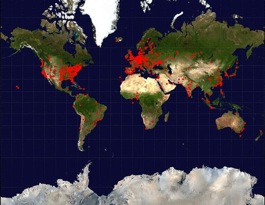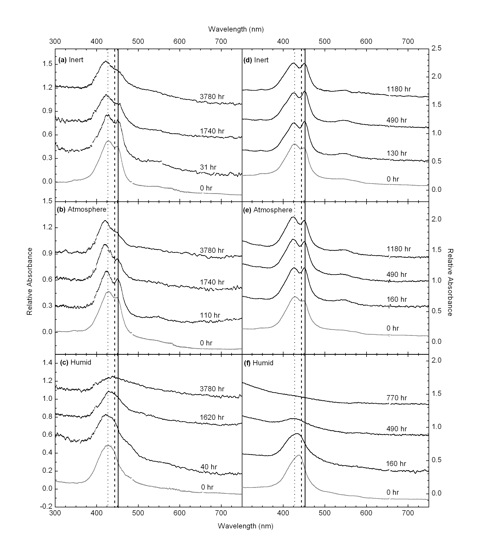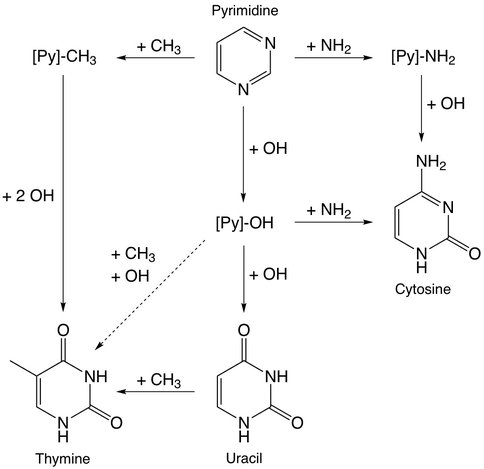2013 Annual Science Report
 NASA Ames Research Center
Reporting | SEP 2012 – AUG 2013
NASA Ames Research Center
Reporting | SEP 2012 – AUG 2013
Cosmic Distribution of Chemical Complexity
Project Summary
This project explores the connections between chemistry in space and the origin of life. It is comprised of three tightly interwoven tasks. We track the formation and evolution of chemical complexity in space starting with simple carbon-rich molecules such as formaldehyde and acetylene. We then move on to more complex species including amino acids, nucleic acids and polycyclic aromatic hydrocarbons. The work focuses on carbon-rich species that are interesting from a biogenic perspective and on understanding their possible roles in the origin of life on habitable worlds. We do this by measuring the spectra and chemistry of analog materials in the laboratory, by remote sensing with small spacecraft, and by analysis of extraterrestrial samples returned by spacecraft or that fall to Earth as meteorites. We then use these results to interpret astronomical observations made with ground-based and orbiting telescopes.
Project Progress
We have published several papers, and are working on others, that describe the production of prebiotic compounds by UV irradiation of cosmic ices. One of the published papers appeared in Astrobiology and described work showing that the photolysis of pyrimidine in astrophysical ices produces a host of new compounds, including all of the pyrimidine-based nucleobases, including cytosine (Figure 1).
Additional papers describe organic nanoglobules found in carbonaceous meteorites (Figure 2) (published in Meteoritics and Planetary Science) and studies done with the recently fallen Sutter’s Mill meteorite (paper currently slated for publication in a special issue of Meteoritics and Planetary Science that will be devoted to this meteorite).
We have published two papers that resulted in two press releases, and submitted two manuscripts. The first paper analyzes Spitzer spectral data cubes on the reflection nebula, NGC 7023, exclusively using polycyclic aromatic hydrocarbon (PAH) spectra and tools in the PAH database (PAHdb) generated in the Ames Astrochemistry Laboratory. 2D-maps of the region show, for the first time, UV-driven, spatial evolution of PAH subpopulations broken down by size, charge (Figure 3), and composition, variations that probe subtle changes in the morphology, radiation field, photodissociation region (PDR) boundary, etc. This work marks a number of 'firsts.’
The second paper also marks a number of 'firsts’ and illustrates the global interest for PAHdb (Figure 4). It represents an unusual application to data returned by the Cassini spacecraft; it reports the presence of PAHs in the atmosphere of Saturn’s largest moon, Titan. Finally, the content and capabilities of PAHdb have been substantially expanded and will be made publicly available by the end of 2013 in a version 2.00 release, timed to coincide with a coupled publication.

Mission involvement- Co-I Sandford continues to be involved with extraction, distribution, and analysis of cometary and interstellar samples returned by the Stardust mission. A host of papers (11) describing several potential interstellar grains in the Stardust collection have been accepted for publication Meteoritics and Planetary Science and they will appear simultaneously with an overview paper in Science. Dr. Sandford also continues to be actively involved as a member of the OSIRIS-Rex Asteroid Sample Return Mission, where he will have numerous responsibilities, including organizing the science team that will study the organics in the returned samples. Finally, Co-I Sandford is currently serving as the PI on a Comet Surface Sample Return mission concept for the next New Frontiers AO. Co-I Andrew Mattioda is a Senior Science Team member for the O/OREOS (Organisms/ORganics Exposure to Orbital Stresses), NASA’s first Astrobiology Small Payloads mission, which launched on November 19, 2010. He works on the SEVO (Space Environment Viability of Organics) component of O/OREOS. Numerous talks have been given and two SEVO science results papers have been published discussing the science results and ground control experiments. One paper discusses the chemical changes occurring in the Iron Tetraphenylporphyrin Chloride in a variety of astrobiological environments (see Figure 6) as well as the apparent stability of the quinone, anthrarufin to degradation. The second paper discusses the technical aspects of setting up ground controls to mimic space flight conditions. This paper has been accepted for publication in the Astrophysical Journal Supplements. Co-I Mattioda is also involved in OREOCube, which involves collaboration with the European Space Agency to place two UV-Vis spectrometers and organic samples on an external science platform on the International Space Station (ISS). This experiment, slated to launch in 2015, will monitor the chemical evolution of various organic and inorganic thin films under astrobiologically relevant conditions.

Publications
-
Boersma, C., Bregman, J. D., & Allamandola, L. J. (2013). PROPERTIES OF POLYCYCLIC AROMATIC HYDROCARBONS IN THE NORTHWEST PHOTON DOMINATED REGION OF NGC 7023. I. PAH SIZE, CHARGE, COMPOSITION, AND STRUCTURE DISTRIBUTION. The Astrophysical Journal, 769(2), 117. doi:10.1088/0004-637x/769/2/117
-
Cook, A. M., Mattioda, A. L., Quinn, R. C., Ricco, A. J., Ehrenfreund, P., Bramall, N. E., … Walker, R. (2014). SEVO ON THE GROUND: DESIGN OF A LABORATORY SOLAR SIMULATION IN SUPPORT OF THE O/OREOS MISSION. The Astrophysical Journal Supplement Series, 210(2), 15. doi:10.1088/0067-0049/210/2/15
-
Cook, A. M., Mattioda, A. L., Ricco, A. J., Quinn, R. C., Elsaesser, A., Ehrenfreund, P., … Hoffmann, S. V. (2014). The Organism/Organic Exposure to Orbital Stresses (O/OREOS) Satellite: Radiation Exposure in Low-Earth Orbit and Supporting Laboratory Studies of Iron Tetraphenylporphyrin Chloride. Astrobiology, 14(2), 87–101. doi:10.1089/ast.2013.0998
-
De Gregorio, B. T., Stroud, R. M., Nittler, L. R., Alexander, C. M. O. D., Bassim, N. D., Cody, G. D., … Zega, T. J. (2013). Isotopic and chemical variation of organic nanoglobules in primitive meteorites. Meteoritics & Planetary Science, 48(5), 904–928. doi:10.1111/maps.12109
-
Jenniskens, P., Fries, M. D., Yin, Q-Z., Zolensky, M., Krot, A. N., Sandford, S. A., … Worden, S. P. (2012). Radar-Enabled Recovery of the Sutter’s Mill Meteorite, a Carbonaceous Chondrite Regolith Breccia. Science, 338(6114), 1583–1587. doi:10.1126/science.1227163
-
López-Puertas, M., Dinelli, B. M., Adriani, A., Funke, B., García-Comas, M., Moriconi, M. L., … Allamandola, L. J. (2013). LARGE ABUNDANCES OF POLYCYCLIC AROMATIC HYDROCARBONS IN TITAN’S UPPER ATMOSPHERE. The Astrophysical Journal, 770(2), 132. doi:10.1088/0004-637x/770/2/132
-
Materese, C. K., Nuevo, M., Bera, P. P., Lee, T. J., & Sandford, S. A. (2013). Thymine and Other Prebiotic Molecules Produced from the Ultraviolet Photo-Irradiation of Pyrimidine in Simple Astrophysical Ice Analogs. Astrobiology, 13(10), 948–962. doi:10.1089/ast.2013.1044
-
Mattioda, A., Cook, A., Ehrenfreund, P., Quinn, R., Ricco, A. J., Squires, D., … Young, A. (2012). The O/OREOS Mission: First Science Data from the Space Environment Viability of Organics (SEVO) Payload. Astrobiology, 12(9), 841–853. doi:10.1089/ast.2012.0861
-
Naraoka, H., Mita, H., Hamase, K., Mita, M., Yabuta, H., Saito, K., … Kawaguchi, J. (2012). Preliminary organic compound analysis of microparticles returned from Asteroid 25143 Itokawa by the Hayabusa mission. GEOCHEMICAL JOURNAL, 46(1), 61–72. doi:10.2343/geochemj.1.0134
-
Sandford, S. A., Bernstein, M. P., & Materese, C. K. (2013). THE INFRARED SPECTRA OF POLYCYCLIC AROMATIC HYDROCARBONS WITH EXCESS PERIPHERAL H ATOMS (H n -PAHs) AND THEIR RELATION TO THE 3.4 AND 6.9 μm PAH EMISSION FEATURES. The Astrophysical Journal Supplement Series, 205(1), 8. doi:10.1088/0067-0049/205/1/8
-
White, D. W., Mastrapa, R. M. E., & Sandford, S. A. (2012). Laboratory spectra of CO2 vibrational modes in planetary ice analogs. Icarus, 221(2), 1032–1042. doi:10.1016/j.icarus.2012.10.024
-
PROJECT INVESTIGATORS:
-
PROJECT MEMBERS:
Christiaan Boersma
Co-Investigator
Amanda Cook
Co-Investigator
Murthy Gudipati
Co-Investigator
Christopher Materese
Co-Investigator
Andrew Mattioda
Co-Investigator
Michel Nuevo
Co-Investigator
Scott Sandford
Co-Investigator
Max Bernstein
Collaborator
Jan Cami
Collaborator
Jamie Cook
Collaborator
Jason Dworkin
Collaborator
Els Peeters
Collaborator
-
RELATED OBJECTIVES:
Objective 2.1
Mars exploration.
Objective 2.2
Outer Solar System exploration
Objective 3.1
Sources of prebiotic materials and catalysts
Objective 3.2
Origins and evolution of functional biomolecules
Objective 3.4
Origins of cellularity and protobiological systems
Objective 4.3
Effects of extraterrestrial events upon the biosphere
Objective 7.1
Biosignatures to be sought in Solar System materials
Objective 7.2
Biosignatures to be sought in nearby planetary systems



